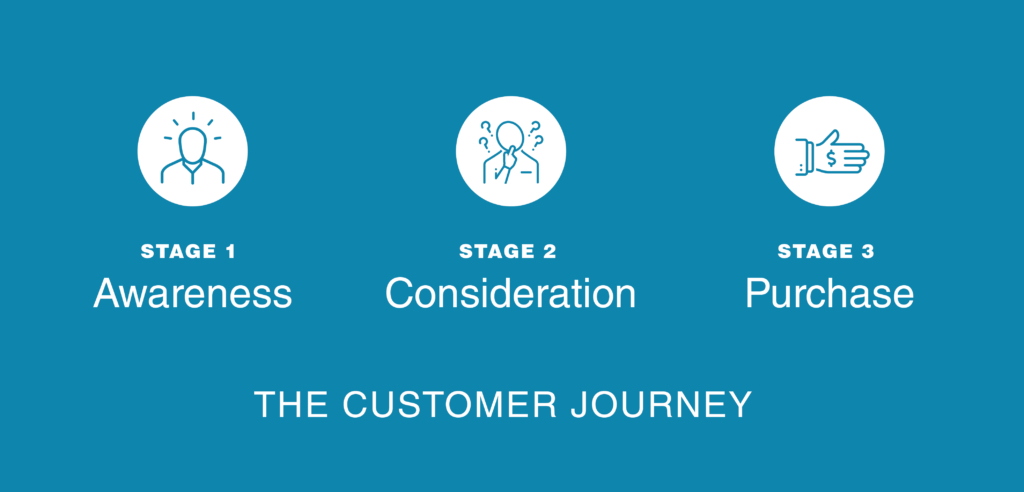

Demystifying Marketing: What the Heck Is the Sales Funnel?
When it comes to marketing terminology, the “sales funnel” ranks right up there with “SEO” and “churn” for jargon that’s most likely to make your eyes glaze over. While it’s tempting to think that these concepts are lofty ideas only used by large companies, they’re actually vital to the success of small businesses right here in the Hudson Valley.
If you’re new to these concepts or just don’t have enough time to explore them for yourself, never fear! As someone who has worked in digital marketing for organizations large and small, I’m here to help you out.
This month, I’m breaking down the stages of the Chronogram Media sales funnel—AKA the customer journey—and giving you tips to use the funnel to its fullest.

Stage 1: Brand Awareness
Potential customers don’t always start their journey by looking for your service. Many times, they don’t even know they need you yet. This is where the top of the funnel—brand awareness—comes in.
When I’m driving down Route 28, I might pass a billboard or another sign for your business that I glance at as I pass by. When I pick up our latest issue of Chronogram, an eye-catching display advertisement might make me stop and look. When I go to an event where your business is displayed as a sponsor, I might take note.
This is brand awareness. It casts a wide net, but it doesn’t always move the needle on a potential customer’s commitment to purchase right then. The goal of brand awareness is to broadcast your business—branding, mission, location, and services—in the places you know your desired demographic will see in the hopes that these potential customers remember your business when the time comes.
Many businesses actually treat this stage as the final step of the funnel and spread marketing efforts only among brand awareness activities. In today’s digital landscape, however, the next two stages are key.
Stage 2: Consideration
The consideration stage marks the time when your potential customers are starting to realize that they might need your services. Because today’s digital tools give us the ability to specifically target your desired customer, it means your business can meet them right when they begin searching.
Companies like Google and Facebook specialize in ad targeting and own incredibly powerful information on consumer search and online behavior. While it’s important to use these tools responsibly, ad targeting services allow you to reach your potential customers at the right moment.
When I search for “best grill” the next thing I know, I may start seeing ads from my local hardware store that sells grills at the top of my Google search or on my Instagram feed. That’s because that business is using Google and Facebook’s ad services to find potential customers in the local area. Here at Chronogram Media, we utilize both of these platforms in addition to other search engine and email marketing tools to help you bring your name to potential customers who are searching for services like yours.
With some of our other products, including custom sweepstakes and quizzes, we work with you to match a price that is attractive to your desired customer demographic with an engaging opportunity or content they are likely to interact with. These types of digital services provide you with qualified leads—AKA those who are most likely to become customers soon.
Stage 3: Purchase
The last stage of the funnel is where all businesses want to be: the point of purchase. At this stage, you’ve passed through consideration and have almost won a customer (congrats!), but it’s not the end of the journey. There are many moments when a customer might abandon a purchase, and it’s important to continue reaching them or else all the work you put into the previous two stages could be for naught.
If I’m on the hunt for the perfect grill for my deck, I might have compared several different brands online, clicked on an ad from you on social media, actually visited your store to see grills in person, and still might not be ready to buy.
This is where marketing tactics like retargeting and reporting come in. Retargeting allows you to make sure your business shows back up in the online world—from emails to social media—of someone who has visited your site without taking action.
At Chronogram Media, we provide reporting for many of our products, including digital banners, email sponsorships, native content, and more. This reporting can show you how many people engaged with your marketing efforts and in some cases, who those people were, so you can make decisions about how to improve your next marketing campaign or reach out to potential customers directly.
The End Goal
At this point, your accumulated efforts are finally ready to pay off. You cast a wide net with brand awareness activities, engaged your desired customer demographic in their online search, and continued to communicate with your most promising potential customers. When combined, the activities in the three stages of the sales funnel ensure you’re spending your efforts as a small business in the most impactful and efficient way possible.
Want to see more marketing tips for small businesses? Subscribe to our monthly newsletter, The Art of Business!

